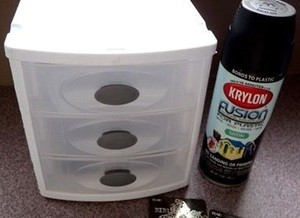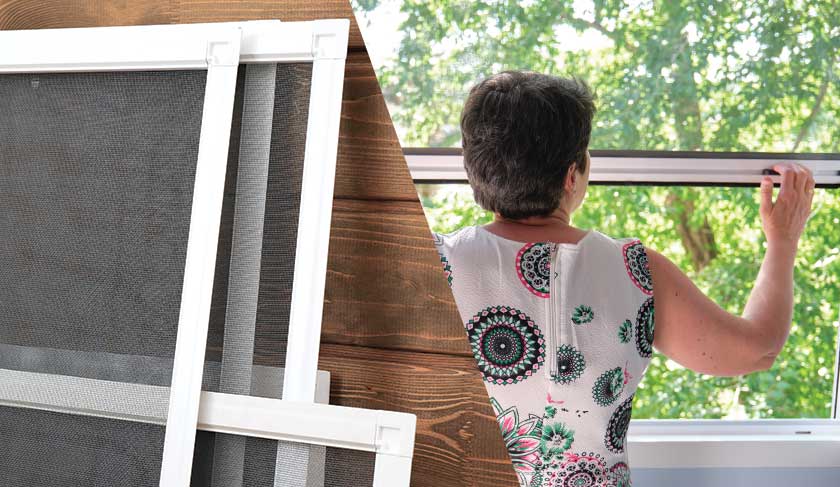Is your camper or RV ceiling starting to droop? Learn how to fix roof upholstery in a car, camper or RV easily and cheaply, with 5 different DIY methods.
A sagging car roof headliner can be a very unsightly problem. All too often, the first piece of upholstered item within a car or older RV/camper to go bad is generally the headliner, that is, the roof upholstery. The type of adhesive that is used to glue the liner to the roof of your car, RV or camper, can degrade quickly when exposed to UV light. As a result, headliners begin to fall off along the edges of the windshield and the back window.
However, it is possible to reattach the roof upholstery in your camper or RV yourself, using a few simple DIY methods. Here, I share 5 different methods you can try, depending on your situation.
What is the Roof Upholstery (Headliner)?
The headliner itself is a piece of fabric material that is mounted on the inside of the car roof or camper/RV ceiling. It serves multiple purposes. The headliner is insulated so that it helps to reduce the amount of heat and sound that enters the car through the roof. It is also an aesthetic feature of the interior, covering the subframe of the roof.
The headliner itself is not just a sheet of fabric that runs from the front to the back of the car. Instead, it is a complex part that is composed of multiple layers that are connected to one another. At the uppermost level, is generally a layer of cardboard. Underneath the cardboard is a layer of either foam or fiberglass, and then the fabric, vinyl, or leather is then affixed to the inside. All 3 of the layers are securely fastened to one another using a high-quality automotive spray adhesive.
The most reliable way to DIY fix roof upholstery is with spray-on glue

How to Fix Roof Upholstery in a Car or Camper
There are countless ways to fix a sagging headliner (aka roof upholstery) in a car, camper or RV. Naturally, the best way to fix it is with spray-on glue, just like the manufacturer used at the plant.
However, some people choose to use pins, thumbtacks, screw pins, staples, double-sided tape, hairspray, and so much more for DIY quick fixes. Here are some of the most popular methods for how to fix roof upholstery in a car, camper or RV which is sagging, dropping or falling off.
#1 Spray-On Glue
If you were to take your RV or camper to a professional automotive upholstery shop, then they would remove your original headliner and add a brand-new one. In order to accomplish this, the upholstery shop will:
- Remove all of the moldings from around the edges of the roof. In most vehicles, this is a series of plastic strips that are screwed or snapped into place.
- The headliner is removed in a single piece, and carefully pulled out of the rear doors or through the trunk.
- The old fabric is then detached from the foam. It may still be sticking in some places, but a hairdryer will heat up the original adhesive enough to remove the fabric with ease.
- A new piece of fabric is then cut to shape, and everything is glued in place with a new layer of spray-on adhesive.
There are a number of ways that a DIYer can do this themselves without actually having to remove the entire headliner. With a little bit of ingenuity, a can of spray adhesive can also be turned into an injector, that can be used to inject the glue through the headliner so that it can be reattached.
How to Fix Sagging Headliner Using Spray Adhesive – View Video on YouTube
#2 How to Fix Roof Upholstery in Car/RV using Pins, Tacks and Staples
The next step is to use either upholstery pins, thumbtacks or screw pins. Although this isn’t the most stylish way to fix a sagging headliner, it will definitely help to keep the fabric from touching your head. The pins and tacks will stick right into the foam layer, and pull the fabric up tight. Regardless of which style of pin you choose to use, you will still end up with a quilted-looking roof.
Upholstery Pins, Thumb Tacks
Upholstery pins and thumb tacks are straight, and therefore known to pop out from time to time. This can be dangerous as it’s possible to sit or step on a pin or thumbtack after it has popped out of the ceiling. This is why more and more DIYers are choosing to use screw pins instead.
Screw Pins
Unlike traditional upholstery pins or thumbtacks, screw pins are not straight. The pin portion of the fastener is looped in a corkscrew, allowing you to twist it into the foam layer of the headliner. Screw pins are less likely to pop out, even when accidentally bumped. As a result, the screw pins will effectively lock the headliner in place. Screw pins come in a wide variety of head types, so you may be able to find something that looks attractive.
Staples
Yes, even staples can be used to hold a sagging roof liner in place. When compared to using thumbtacks, upholstery pins, or screw pins, staples can be very unsightly. Nevertheless, it has been used successfully time and time again. Generally, it’s best to use long upholstery staples along the edges of the roof liner using a proper upholstery staple gun (not your regular office stapler), where they can be easily hidden underneath the trim. For larger, centralized areas of the roof liner, pins are always a better option.
Keep in mind, that using staples, upholstery pins, thumb tacks or screw pins is only a temporary solution to the problem.
How to Fix Sagging Roof in Car Using Twist Pins – View Video on YouTube
#3 How to Fix Roof Upholstery in a Car/RV using Hair Spray
When it comes to figuring out how to fix roof upholstery in a car, camper or RV yourself, you don’t have to use spray adhesive. Countless people have used hairspray as an alternative to the adhesive. So long as the headliner is not sagging excessively, it’s possible to reattach it simply using the hairspray.
How to Fix Roof Upholstery in a Car, RV or Camper using Hair Spray:
- Spray the hairspray onto the headliner, from front to back.
- Carefully push the headliner all the way up to the foam as you go, spraying on more hairspray as required.
- Let it dry.
Once it has completely dried, it will be a lot stiffer and harder than it was before, but it should look a lot better than it would with a bunch of pins in it.
#4 Double-Sided Tape
Without having to spend a lot of money, it’s possible to reattach the headliner using double-sided carpenter’s tape.
To fix the roof upholstery using double-sided tape, at least one edge of the headliner must be completely separated from the foam. The reason for this, is you need to be able to put the tape up in between the foam and the fabric.
This is a short-term repair, as the double-sided tape will not last very long. Eventually, the adhesive will lose its grip on the fabric and the headliner will begin sagging once again.
#5 Steam the Headliner
The most common cause for a sagging headliner (aka roof upholstery) is the continuous heating and cooling of the adhesive originally used to attach it. Over time as the roof of the car heats up and cools down throughout the day, the bond of the adhesive on the fabric wears down. As a result, the headliner will begin to sag near the windshield, and slowly work its way to the center of the roof.
It’s important to remember, however, that the adhesive is still there, it is just no longer sticking to the fabric. The glue can be reused, as long as it is melted safely. Therefore, the technique that many professional upholsterers use for how to fix roof upholstery in a car, is by using a steam cleaner.
While it may not be the cheapest way of fixing a headliner, steam cleaners are a great investment for all sorts of cleaning throughout your home or camper. They can also be rented cheaply.
Without ever having to remove the headliner itself, the steam may be able to heat the glue up enough in order to reattach the headliner to the foam.
How to Fix Roof Upholstery in a Car or Camper using a Steam Cleaner
You’ll want to start in a small section to see if the glue is still good. If the glue has gotten too old, it won’t reactivate under the heat.
If you have found that it is working, then you’ll want to:
- Run the steamer wand across the headliner, in the same manner as you would using a paint roller.
- As you move it along the length of the headliner, carefully press the headliner back into the foam layer. This will help to reduce the number of creases and wrinkles that will form the fabric.
As the glue is being reactivated, you’ll need to pay close attention to how the liner is adhering to the foam. It’s possible to stretch one part of the liner out of place, which will ruin the entire thing.
While the steps for how to fix roof upholstery in a car using a steam cleaner sound straightforward, be warned, this is no easy fix. Reactivating glue is a time-consuming process that requires skill and dedication. If in doubt, use one of the other techniques instead.
Final Tips on How to Fix Roof Upholstery in a Car or Camper
If your RV or camper has reached the age and state of disrepair that the car roof upholstery (aka headliner) is starting to sag, unfortunately you are not left with many options for repairing it while retaining a professional look. If your roof upholstery is very damaged, you may find yourself in a situation of deciding whether to learn how to fix roof upholstery in a car or camper yourself, or invest in a professional for a full replace.
When Should You Replace the Roof Upholstery?
The costliest way of fixing a sagging headliner is to simply replace it altogether. If your vehicle is fairly new, then chances are you will be able to purchase an entire headliner ready to install from the dealership. However, this can be quite costly as it will not be covered under the warranty. Likewise, not all dealerships will have access to replacement liners. As a result, you may need to go to a professional automotive upholsterer.
The professionals can do a simply amazing job on any car or vehicle. From simple to fabulous. Just about anything can be done when the headliner is being replaced. The cost of replacing a headliner completely can be quite expensive, due to the cost of labor and experience. Nevertheless, professionals can re-create just about any look you want, even if that look is OEM.
The only real way to get the job done properly with a professional finish is to take it to a professional, who can remove and replace the headliner properly. Chances are, however, that if you’re reading this DIY article then you probably have an older vehicle and aren’t too concerned about getting a professional finish. If you have a beautiful vintage camper or RV with good resell potential, definitely take it to a pro.
If you’re not worried about getting a totally professional finish, then the next best solution is to use spray adhesive instead, covered in step one. The other steps after that start to devolve into hacks that might give you pretty questionable results, but if you’re not worried about final appearance (like visible tacks) then feel free to give them a try.
Author
-

Hey, I’m Sara, co-owner of NestKoo! I’m a graphic designer and professionally trained fine artist, with a Bachelor of Arts (Fine Art) majoring in Painting. I love being close to nature, sustainable living and bringing new life to old things. My specialty in NestKoo is DIY house painting, upholstery and furniture upcycling, where I bring my skills in fine art painting and contemporary design together into a practical home DIY context.
View all posts










